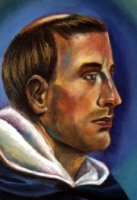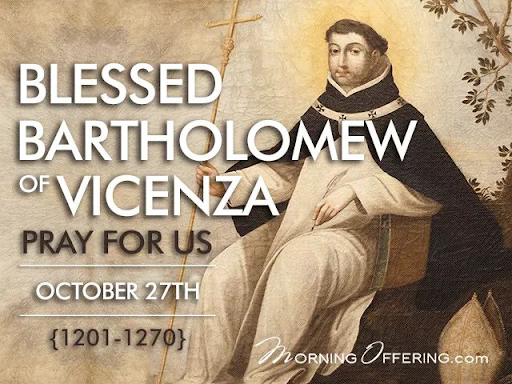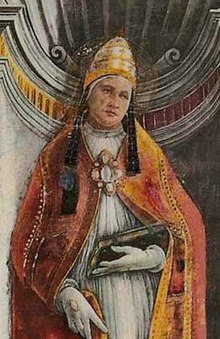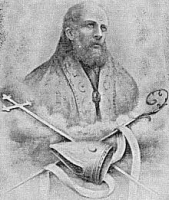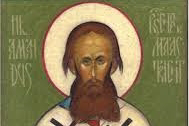Saint Jude Thaddeus
புனிதர் யூதா ததேயு
(St. Jude the Apostle)
திருத்தூதர், மறைசாட்சி:
(Apostle and Martyr)
பிறப்பு: கி.பி. 1 (முற்பகுதி)
கலிலேயா, யூதேயா, ரோம பேரரசு
(Galilee, Judaea, Roman Empire)
இறப்பு: கி.பி. 67
பெர்சியா அல்லது அராராத், ஆர்மேனியா
(கோடரியால் வெட்டி கொல்லப்பட்டார்)
(Persia, or Ararat, Armenia)
ஏற்கும் சபை/ சமயம்:
ரோமன் கத்தோலிக்க திருச்சபை
(Roman Catholic Church)
கிழக்கு கத்தோலிக்க திருச்சபைகள்
(Eastern Catholic Churches)
கிழக்கு மரபுவழி திருச்சபை
(Eastern Orthodox Churches)
ஆங்கிலிக்கன் ஒன்றியம்
(Anglican Union)
லூதரனிய திருச்சபை
(Lutheran Church)
ஓரியண்ட்டல் மரபுவழி திருச்சபை
(Oriental Orthodoxy)
கிழக்கு திருச்சபை
(Church of the East)
அகில்பயன் திருச்சபை
(Aglipayan Church)
இஸ்லாம்
(Islam)
முக்கிய திருத்தலங்கள்:
புனித பேதுரு பேராலயம், ரோம், ரெய்ம்ஸ், டௌலோஸ், ஃபிரான்ஸ்
(Saint Peter's, Rome, Reims, Toulouse, France)
நினைவுத் திருவிழா: அக்டோபர் 28
பாதுகாவல்:
ஆர்மீனியா (Armenia), தொலைந்த காரணங்கள், அவநம்பிக்கையான சூழ்நிலைகள், மருத்துவமனைகள், செயின்ட் பீட்டர்ஸ்பர்க் (St. Petersburg), ஃ புளோரிடா (Florida), சிகாகோ காவல் துறை (Chicago Police Department), பிரேசில் (Brazil), ஃ பிலிப்பைன்ஸ் (Philippines).
புனிதர் யூதா ததேயு, முதலாம் நூற்றாண்டில் வாழ்ந்தவரும், இயேசுவின் பன்னிரு திருத்தூதர்களுள் (அப்போஸ்தலர்களுள்) ஒருவருமாவார்.
இயேசுவை காட்டிக்கொடுத்த யுதாசுவிடமிருந்து வேறுபடுத்த, இவரை “ததேயு” (Thaddaeus) என்றோ, “லேபெசியஸ்” (Lebbaeus) என்றோ, “யாக்கோபின் யூதா” (Jude of James), என்றோ அழைப்பர். யோவான் நற்செய்தியாளர் இவரை "யூதா - இஸ்காரியோத்து - யூதாசு அல்ல" என்று குறிப்பிடுகிறார்.
பாரம்பரியம் மற்றும் புராணம்:
புனிதர் யூதா ததேயு, “யூதேயா” (Judea), “சமாரியா” (Samaria), “சிரியா” (Syria), “மெசபடோமியா” (Mesopotamia) மற்றும் “லிபியா” (Libya) ஆகிய நாடுகளில் நற்செய்தி போதித்தார் என்று பாரம்பரிய செய்திகள் கூறுகின்றன. இவரும் பர்த்தலமேயுவுமே ஆர்மீனியா நாட்டிற்கு கிறிஸ்தவத்தை கொண்டுவந்தனர் என்பர். அவர் “பெய்ரூட்” (Beirut) மற்றும் “எடெஸாவிற்கு” (Edessa) விஜயம் செய்ததாக கூறப்படுகிறது. இருப்பினும், பிந்தைய பணிகளின் தூதுச் செய்தியாளர், இயேசு கிறிஸ்துவின் எழுபது சீடர்களில் ஒருவரான “தடேயஸ்” (Thaddeus of Edessa) என்றும் அறியப்படுகிறது.
பதினான்காம் நூற்றாண்டின் வரலாற்றாசிரியரான “நிஸ்பொரஸ் கல்லிஸ்டஸ்” (Nicephorus Callistus) என்பவரின் கூற்றின்படி, இயேசு கிறிஸ்து, தமது அதிதூய அன்னையின் வேண்டுகோளின்படி, சாதாரண தண்ணீரை திராட்சை இரசமாக மாற்றி நிகழ்த்திய முதல் அதிசயமான “கானா” (Cana) ஊர் திருமணத்தில் மணமகனே புனிதர் யூதா ததேயு’தான் என்கிறார். பிற்காலத்தில், ரோமர்களால் மீண்டும் கட்டப்பட்டு, “செசரியா பிலிப்பி” (Caesarea Philippi) என மறு பெயரிடப்பட்ட “கலிலேயாவிலுள்ள” (Galilee) “பனேஸ்” (Paneas) எனும் நகரிலுள்ள யூதர்கள் குடும்பத்தில் இவர் பிறந்தவர் என்றும் புராணங்கள் கூறுகின்றன.
இவர் “கிரேக்கம்” (Greek) மற்றும் “அராமைக்” (Aramaic) மொழிகள் பேசினார். அந்த பகுதியில் உள்ள கிட்டத்தட்ட அவரது சமகாலத்தவர்கள் அனைவரையும் போல, இவரும் விவசாயத்தையே தொழிலாக செய்து வந்தார்.
சுமார் கி.பி. 67ம் ஆண்டு, ரோமப் பிரதேசமான “சிரியாவின்” (Syria) “லெபனான்” நாட்டு தலைநகரும், பிரதான துறைமுகமுமான “பெய்ரூட்” (Beirut) நகரில் இவரும், “தீவிரவாதியாய் இருந்த புனிதர் சீமோனும்” (Simon the Zealot) மறைசாட்சியாய் மரித்தனர். இவர், கோடரியால் வெட்டப்பட்டு மரித்தார். இவரது உடல், பின்நாளில் வத்திக்கானில் உள்ள புனித பேதுரு பேராலயத்திற்கு எடுத்துச் செல்லப்பட்டு அடக்கம் செய்யப்பட்டது.
இவரது நினைவுத் திருவிழா நாள் அக்டோபர் 28 ஆகும்.
Also known as
• Jude of James
• Judas Thaddaeus
• Lebbaeus
• Jude, brother of Jesus
• Lebai Sleeha
Additional Memorial
19 June (Eastern Church)
Profile
Son of Cleophas, who died a martyr, and Mary who stood at the foot of the Cross, and who annointed Christ's body after death. Brother of Saint James the Lesser. Nephew of Mary and Joseph; blood relative of Jesus Christ, and reported to look a lot like him. May have been a fisherman. Apostle.
Wrote the canonical Epistle named for him. Preached in Syria, Mesopotamia, and Persia with Saint Simon. Healer. Exorcist. Could exorcise pagan idols, which caused the demons to flee and the statues to crumble.
His patronage of lost or impossible causes traditionally derives from confusion by many early Christians between Jude and the traitor Judas Iscariot; not understanding the difference between the names, they never prayed for Jude's help, and devotion to him became something of a lost cause.
Died
• beaten to death with a club, then beheaded post-mortem in 1st century Persia
• relics at Saint Peter's Basilica, Rome, Italy, at Rheims, France, and at Toulouse, France
Patronage
• desperate situations, forgotten, lost or impossible causes
• hospital workers, hospitals
• diocese of Saint Petersburg, Florida
Representation
• axe
• bearded man holding an oar
• boat
• boat hook
• book
• carpenter's rule
• club
• halberd
• scroll
• square rule
• sword
• nearly every image depicts him wearing a medallion with a profile of Jesus, and usually with a small flame above his head
• often carries a pen or sits at a writing location to make reference to the canonical Epistle
Saint Juan Alcober Figuera
Also known as
John Alcober
Additional Memorial
28 September as one of the Martyrs of China
Profile
Dominican priest and missionary to China. Due to transport trouble, he was marooned in Lorca for a while, where he became a popular preacher. Sailed to Manila in the Philippines in 1726, and reached China in 1728. Worked sixteen years in the Fo-kien province.
Posing as a water seller so he could move around the city, he still had to do his ministry in secret; he once had to be smuggled into a house in a dying man's coffin in order to administer Last Rites. To escape detection, he once climbed into a tree; realizing he would need to spend the night there, he began saying his evening prayers; he was joined in prayer by his friend Blessed Francis Serrano who was hiding in the same tree.
In 1746, one of his flock received a vision of Our Lady of the Rosary. The visionary appeared so beatific in death that a crowd gathered to see her body; the press of visitors prevented John from making his usual quick escape, and he was arrested. He, Francis Serrano and Father Francis Diaz were tortured for the location of Bishop Pere Sans-Jorda and Father Joachim Royo, who were known to be in the province; these two surrendered to end the torture of their brothers. Martyred with Saint Peter Sanz, Blessed Francis Serrano, and other Dominicans.
Born
1694 at Gerona, Spain
Died
• strangled to death on 25 October 1748 in Fu-tsheu prison, Fo-kien province, China
• even the executioners noted that the faces of the victims looked peaceful and radiant
Beatified
14 May 1893 by Pope Leo XIII
Canonized
1 October 2000 by Pope John Paul II
Saint Simon the Apostle
Also known as
• Nathanael of Cana
• Simon Kananaios
• Simon Kananites
• Simon the Cananean
• Simon the Zealot
• Simon Zealotes
Additional Memorial
10 May (Coptic Church)
Profile
Apostle. Called the Cananean or Zealot because of his zeal for the Jewish law; he was not from Cana, nor a member of the Zealot party. Like all the Apostles, he was a convert, and was trained by Saint Peter the Apostle. Evangelized in Egypt and Mesopotamia, though there are traditions of him being in several other locations. He was a martyr for the faith, but several places claim to have been the site of that, too.
Died
• Abyssinians claim he was crucified in Samaria
• Lipsius says he was sawn in half at Suanir, Persia
• Moses of Chorene writes that he was martyred at Weriosphora in Iberia
• many locations claim to have relics including Toulouse, France, and Saint Peter's Basilica, Rome, Italy
Patronage
• curriers
• sawmen, sawyers
• tanners
• woodcutters
• Monterchi, Italy
Representation
• boat
• cross and saw
• fish
• lance
• man being sawn in two longitudenally
• oar
• saw
• two fish
Blessed Germain of Talloires
Also known as
• Germain of Montfort
• German, Germano
Profile
Brother of Saint Ruph. Studied theology at the University of Paris, France for several years where he worked with and served as tutor to Saint Bernard of Menthon. Benedictine monk at the Abbey of Savigney in the Savoy region of France. WIth several other brother monks, he founded the monastery of Talloires, France c.1018, and served as its first prior. Pilgrim to the Holy Lands. He spent his final years, beginning about 1033, as a hermit living in a cave near Lac d’Annecy; a church is now built above the cave. The town of Saint-Germain-de-Joux, France is named for him.
Born
Montfort, France
Died
• 1018 in Talloires, France of natural causes
• relics enshrined by Saint Francis de Sales in 1621
• relics hidden from the anti–Catholic forces of the French Revolution in the later 18th century
• the chapel fell into disrepair, and the relics were lost for several years
• relics re-discovered in 1830 and re-enshrined in a new chapel in 1838
Beatified
1886 by Pope Leo XIII (cultus confirmation)
Saint Joaquín Royo Pérez
Also known as
Joachim Royo Pérez
Additional Memorial
28 September as one of the Martyrs of China
Profile
Joined the Dominicans in Valencia, Spain in 1709. Missionary to the Philippines in 1712, and then to China in 1715. Worked with Saint Peter Sanz. Priest. He served his parishioners by night, hiding in tombs or secret rooms by day to avoid the government persecutions. Imprisoned for two years for his faith beginning in 1746. Martyr.
Born
1691 at Teruel Spain
Died
• tortured and strangled to death on the evening of 28 October 1748 in prison at Fu-tsheu, China
• relics enshrined in the church of Saint Dominic in Manila, Philippines
Canonized
1 October 2000 by Pope John Paul II
Saint Francisco Díaz del Rincón
Memorial
28 September as one of the Martyrs of China
Profile
Joined the Dominicans in Ecija, Spain at age 17, making his profession on 12 September 1731. Priest. Missionary to the Philippines in 1735, and soon after that in China. Martyr.
Born
2 October 1713 in Ecija, Seville, Spain
Died
• tortured and strangled to death on the evening of 28 October 1748 in prison at Fu-tsheu, China
• relics enshrined in the church of Saint Dominic in Manila, Philippines
Canonized
1 October 2000 by Pope John Paul II
Saint Ferrutius
Also known as
Ferruccio, Ferruccius
Profile
Roman soldier. Christian. When stationed at Mainz, Germany, as part of his duty he was ordered to worship an idol. He refused, and demanded his discharge from the army so that he could stay true to his faith. Instead he was thrown into prison and abused to death. Martyr.
Died
• from abuse and starvation
• relics enshrined in Bleidenstadt, Germany by Saint Lull in 778
• relics taken to Mainz, Germany by the Jesuits in 1632
• relics destroyed during the siege of Mainz in 1793
Canonized
by Pope Eugene I
Patronage
Bleidenstadt, Germany
Representation
soldier holding a banner with a cross, a palm branch and a small shield with an escarbuncle
Lord of Miracles
Also known as
Señor de los Milagros de Nazarenas
Profile
A mid-17th-century painting of the Crucifixion that is venerated in Lima, Peru, and its celebration involves one of the largest processions in the world. It was painted by an unnamed African taken to Peru as a slave from what is now Angola, shows Christ on the cross with the Father and Holy Spirit above, the Blessed Virgin Mary to the right, Saint Mary Magdalene to the left. The name originated on 13 November 1655 when everything around it was destroyed in an earthquake that left the painting standing and undamaged.
Saint Faro of Meaux
Also known as
Burgundofaro, Farone, Pharo, Pharon
Profile
Son of Count Agneric. Brother of Saint Cagnoald and Saint Burgundofara. Grew up in the court of King Theodebert II of Austrasia. Married layman. Part of the court of King Clotaire II. When he was 35 years old, he and his wife agreed to separate. Faro became a monk at Meaux, France and then a priest. Bishop of Meaux c.626. Worked for renewal of monastic life, evangelized his diocese, and was known for his charity to the poor. Friend of Saint Fiacre, and dispatched Saint Chillien to evengelize around Artois, France.
Born
7th century
Died
c.675 of natural causes
Saint Rodrigo Aguilar Alemán
Additional Memorial
21 May as one of the Martyrs of the Mexican Revolution
Profile
Parish priest in Uniòn de Tula, Mexico. Poet. Martyr.
Born
13 February 1875 in Sayula, Jalisco, Mexico
Died
• hanged from a mango tree at dawn on 28 October 1927 in the public square in Ejutla, Jalisco, Mexico
• buried in the parish church in Uniòn de Tula, Jalisco, Mexico
Canonized
21 May 2000 by Pope John Paul II
Saint Francis Serrano
Also known as
Francisco Serrano-Frías
Profile
Dominican priest. Missionary to Fujian, China; worked with Saint John Alcober. Imprisoned with Saint Pere Sans Jorda in 1746 for their work spreading the faith. Chosen titular bishop of Tipasa while in prison. Martyr.
Born
4 December 1695 in Huéneja, Granada, Spain
Died
strangled to death on 25 October 1748 in Fuzhou, Fujian, China
Canonized
1 October 2000 by Pope John Paul II
Saint Gioan Ðat
Also known as
Giovanni, Johannes, John
Additional Memorial
24 November as one of the Martyrs of Vietnam
Profile
Parish priest in the apostolic vicariate of West Tonkin, ordained in 1798. Arrested for his faith soon after. Martyr.
Born
c.1765 in Ðong Chuoi, Thanh Hóa, Vietnam
Died
28 October 1798 in Cho Ra, Thanh Hóa, Vietnam
Canonized
19 June 1988 by Pope John Paul II
Saint Anastasia the Elder
Also known as
Anastasia II
Profile
Third-century nun. Spiritual student of Saint Sophia. Tortured, mutilated (breasts, hands and feet cut off and teeth broken out) and executed for her faith during the persecutions of Valerian.
Born
Greek
Died
• beheaded in 253 in Rome, Italy
• buried by Saint Sophia
Saint Fidelis of Como
Also known as
Fedele
Profile
Christian soldier in the imperial Roman army. Martyred in the persecutions of Maximian Herculeus.
Died
• c.304
• relics venerated in Como, Italy and Milan, Italy
Patronage
Arona, Italy
Saint Eadsin of Canterbury
Also known as
Eadsige, Edsige, Eadsimus
Profile
Monk at Christ Church, Canterbury, England c.1030. Archbishop of Canterbury, England in 1038, receiving the pallium from Pope Benedict IX. Crowned Saint Edward the Confessor as king of England on 3 April 1043.
Died
late October 1050 of natural causes
Saint Abdias of Babylon
Also known as
Obadiah of Babylon
Profile
One of the 72 disciples mentioned in Luke 10. They were sent out ahead of Jesus to make preparations for him in the towns he was to visit and evangelize. Some sources list him as the first bishop of Babylon, consecrated by Saint Simon the Zealot and Saint Jude Thaddeus.
Saint Abraham of Ephesus
Profile
Wrote several theological treatises. They became so well known that he attracted many students, and he founded monasteries for them at Constantinople and Jerusalem; they were known as Abrahamites. Archbishop of Ephesus.
Died
6th century of natural causes
Saint Cyrilla of Rome
Also known as
Cirilla
Profile
Daughter of Saint Tryphonia of Rome. Known for her charity and almsgiving. Martyred in the persecutions of Claudius II.
Died
c.268
Saint Diomedes the Younger
Profile
Student of Saint Trifillio. Miracle worker; legend says that when Cyprus was being attacked by Saracens, Diomedes made the sign of the cross at them and they converted from Islam to Christianity.
Born
4th century Leucopolis, Cyprus
Blessed Leoncio Lope García
Profile
Augustinian friar.
Born
24 April 1902 in Tordómar, Burgos, Spain
Died
28 October 1936 in Neila, Santander, Spain
Beatified
28 October 2007 by Pope Benedict XVI
Saint Cyril of Rome
Profile
A bystander who witnessed the torture and mutilation of Saint Anastasia the Elder. When Anastasia begged for water, he brought her some. Immediately seized and executed for his actions. Martyr.
Died
253 in Rome, Italy
Saint Remigius of Lyons
Profile
Chaplain to the court of King Charles the Bald. Archbishop of Lyons, France in 852. Fought heresy but also fought against harsh treatment of heretics.
Died
875 of natural causes
Saint Salvius
Also known as
Saire, Salvio
Profile
Sixth-century hermit in France, he was known for his theological learning and personal piety; the area where he lived is known as Saint-Saire in his honour.
Saint Genesius of Thiers
Also known as
• Genesius of Tigernum
• Genesius of Tifernum
Profile
Martyr.
Died
Tifernum, Aquitaine (in modern France)
Saint Godwin of Stavelot
Profile
Benedictine monk. Abbot of the monastery of Stavelot-Malmedy, Belgium.
Died
c.690 of natural causes
Saint Anglinus of Stavelot
Profile
Monk. Abbot of Stavelot-Malmédy Abbey in Belgium.
Died
c.768
Saint Alberic of Stavelot
Profile
Monk. Abbot of Stavelot-Malmédy Abbey in Belgium.
Died
779
Saint Dorbhene of Iona
Profile
Relative of Saint Columba. Monk. Abbot of Iona Abbey.
Died
713
Saint Elius of Lyon
Profile
Bishop of Lyon, France in the early 3rd century.
Martyrs of Avila
Profile
Two sisters and a brother who, during a period of persecution, fled Talavera de la Reina, Spain, were caught and executed. Martyrs: Christeta, Sabina and Vincent.
Died
303 in Avila, Spain
Martyred in the Spanish Civil War
Thousands of people were murdered in the anti-Catholic persecutions of the Spanish Civil War from 1934 to 1939. I have pages on each of them, but in most cases I have only found very minimal information. They are available on the CatholicSaints.Info site through these links:
• Blessed Claudio Julían García San Román
• Blessed Maria Asuncion
Also celebrated but no entry yet
• Holy Bishops of Metz
• Bononato de Prexano
• Leodardo of Soissons





